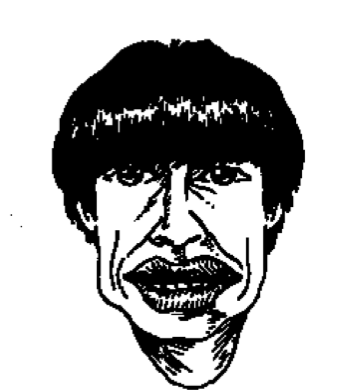Lovable Mop-top Orgy Participants
On July 26, 1968, Mick Jagger flew from Los Angeles to London for a birthday party thrown in his honor at a hip new Moroccan-style bar called the Vesuvio Club—“one of the best clubs London has ever seen,” remembered proprietor Tony Sanchez. Under black lights and beautiful tapestries, some of London’s trendiest models, artists, and pop singers lounged on huge cushions and took pulls from Turkish hookahs, while a decorative, helium-filled dirigible floated aimlessly about the room. As a special treat, Mick brought along an advance pressing of the Stones’ forthcoming album, Beggars Banquet, to play over the club’s speakers. Just as the crowd was “leaping around” and celebrating the record—which would soon win accolades as the best Stones album to date—Paul McCartney strolled in, and passed Sanchez a copy of the forthcoming Beatles single “Hey Jude/Revolution,” which had never before been heard by anyone outside of Abbey Road Studios. Sanchez recalled how the “slow, thundering buildup of ‘Hey Jude’ shook the club”; the crowd demanded that the seven-minute song be played again and again. Finally, the club’s disc jockey played the flip side, and everyone heard “John Lennon’s nasal voice pumping out ‘Revolution.’” “When it was over,” Sanchez said, “Mick looked peeved. The Beatles had upstaged him.”
“It was a wicked piece of promotional one-upsmanship,” remembered Tony Barrow, the Beatles’ press officer. By that time, the mostly good-natured rivalry between the Beatles and the Stones had been ongoing for several years. Although the Beatles were more commercially successful, the two bands competed for radio airplay and record sales throughout the 1960s, and on both sides of the Atlantic teens defined themselves by whether they preferred the Beatles or the Stones. “If you truly loved pop music in the 1960s… there was no ducking the choice and no cop-out third option,” one writer remarked. “You could dance with them both,” but there could never be any doubt about which one you’d take home.
Much of this was by design. With their matching suits, mop-tops, and cheeky humor, the Beatles largely obscured their origins as working-class Liverpudlians; by contrast, under the influence of their wily manager, Andrew Loog Oldham, the Stones cultivated a decadent, outlaw image, even though they mostly hailed from the London suburbs. “The Beatles were thugs who were put across as nice blokes,” someone remarked, “and the Rolling Stones were gentlemen who were made into thugs by Andrew.”
Many in the media were quick to notice the two groups’ contrasting styles. When the Rolling Stones arrived in the United States, the first Associated Press (AP) report described them as “dirtier, streakier, and more disheveled than the Beatles.” Tom Wolfe put things more...
You have reached your article limit
Sign up for a digital subscription and continue reading all new issues, plus our entire archives, for just $1.50/month.
Already a subscriber? Sign in





